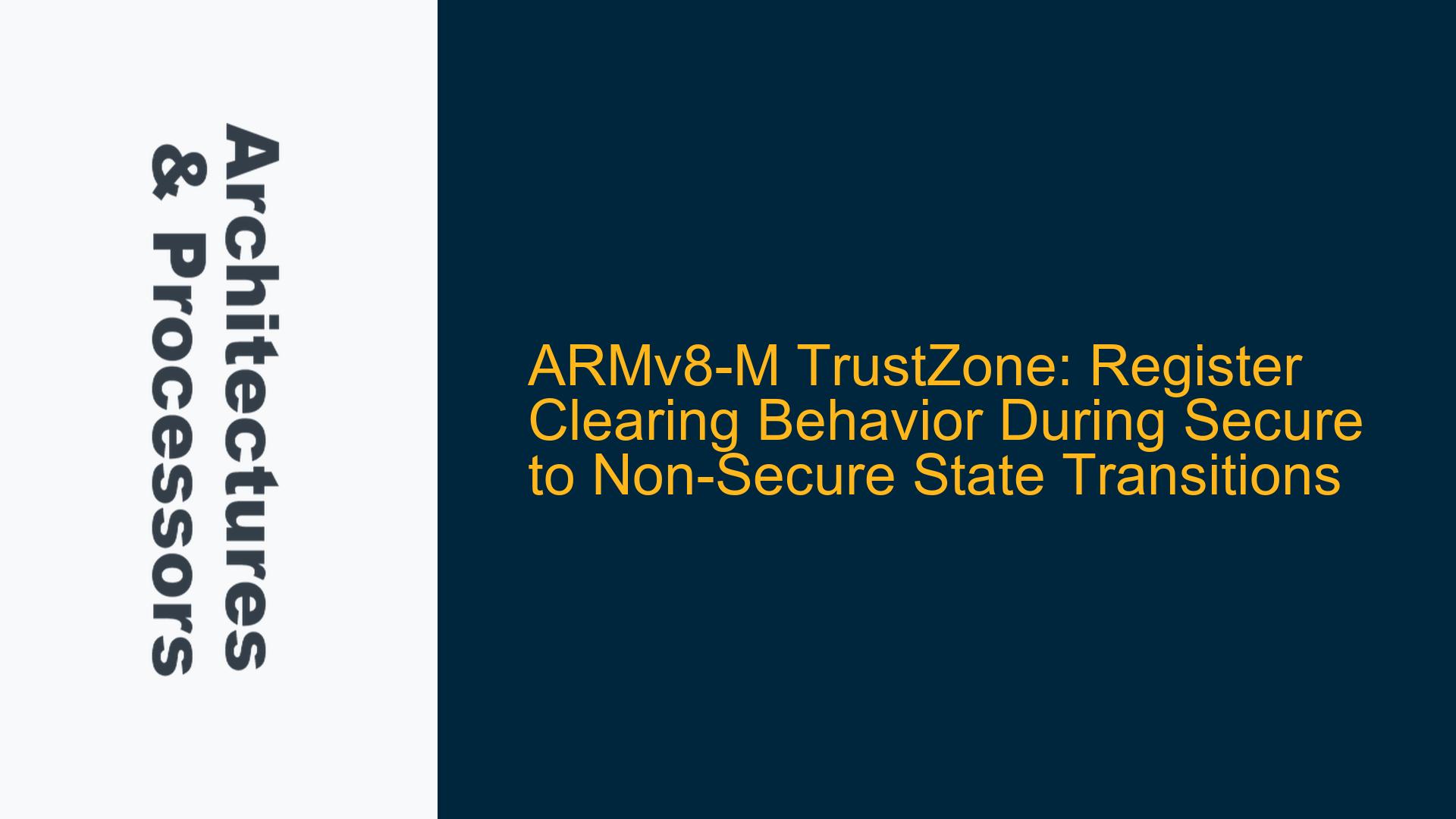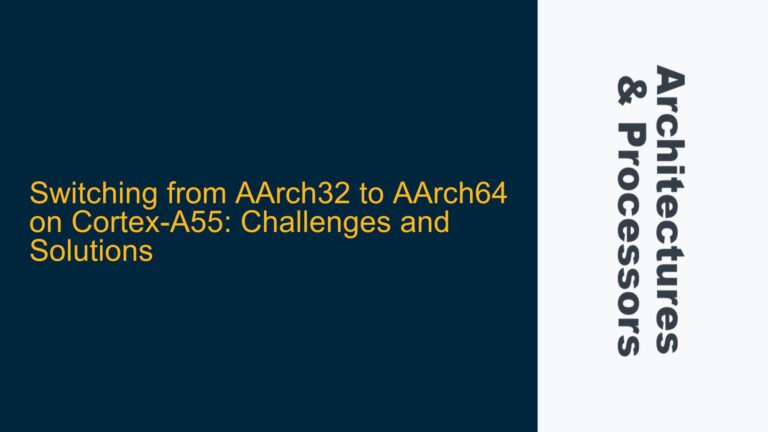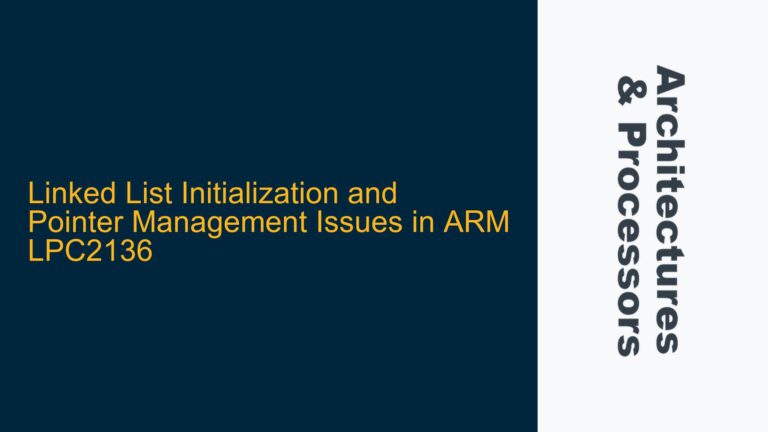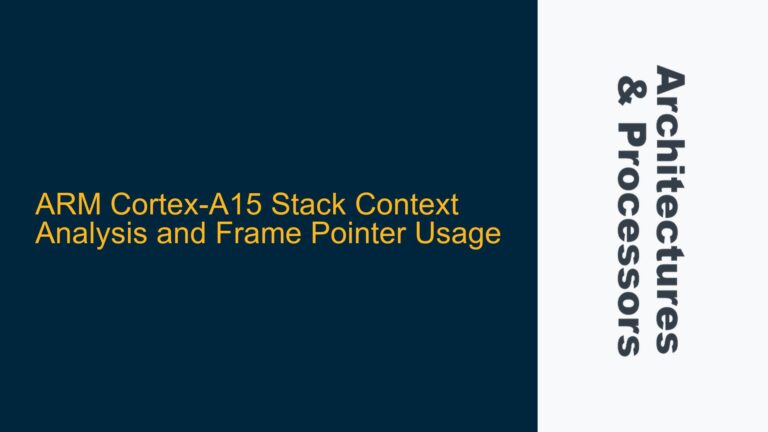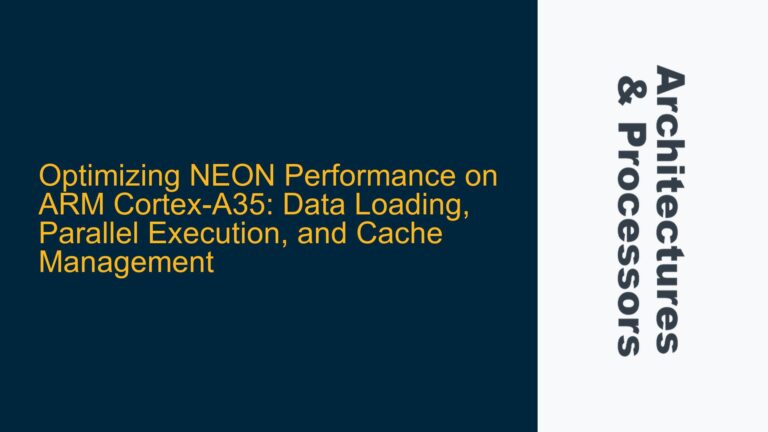ARMv8-M TrustZone Register Clearing Behavior: Secure to Non-Secure Transitions
The ARMv8-M architecture introduces TrustZone technology, which provides hardware-enforced isolation between secure and non-secure states. This isolation is critical for protecting sensitive data and code in embedded systems. However, the behavior of register clearing during state transitions, particularly from secure to non-secure states, has raised questions about potential security vulnerabilities. Specifically, the observation that only registers R0-R3 and R12 are cleared when a non-secure callable function returns to a non-secure function, while R4-R11 remain uncleared, has led to concerns about data leakage.
The ARMv8-M architecture defines specific rules for register usage and clearing during state transitions to ensure security. When a secure function calls a non-secure function, all registers R0-R12 are cleared to prevent any secure data from being exposed to the non-secure world. However, when a non-secure callable function returns to a non-secure function, only R0-R3 and R12 are cleared. This discrepancy arises from the architectural design and the calling conventions used in ARMv8-M.
The ARMv8-M architecture uses a combination of hardware and software mechanisms to enforce security. The hardware ensures that certain registers are cleared during state transitions, while the software is responsible for managing the remaining registers. This division of responsibilities is necessary to balance performance and security. Clearing all registers during every state transition would incur a significant performance penalty, especially in systems with frequent secure-to-non-secure transitions.
The decision to clear only R0-R3 and R12 during a return from a non-secure callable function is based on the ARM Architecture Procedure Call Standard (AAPCS). According to the AAPCS, R0-R3 are used to pass arguments to functions, and R12 is used as a scratch register. These registers are considered volatile and are not expected to retain their values across function calls. In contrast, R4-R11 are considered callee-saved registers, meaning that their values must be preserved across function calls. This preservation is necessary to maintain the integrity of the calling function’s state.
The callee-saved nature of R4-R11 means that these registers are not automatically cleared by the hardware during state transitions. Instead, the responsibility for clearing these registers falls on the software. If a secure function uses R4-R11 to store sensitive data, it must explicitly clear these registers before returning to the non-secure state. Failure to do so could result in the exposure of secure data to the non-secure world.
The ARMv8-M architecture provides several mechanisms for managing register clearing during state transitions. These mechanisms include the use of secure gateway (SG) instructions, which are used to transition between secure and non-secure states, and the Secure State Stack Pointer (SSP), which is used to manage the secure stack. Additionally, the architecture defines a set of secure context management instructions that can be used to save and restore the secure state during state transitions.
The secure gateway instructions are used to transition from the non-secure state to the secure state. These instructions ensure that the processor enters the secure state in a controlled manner, with the necessary registers cleared to prevent data leakage. When transitioning from the secure state to the non-secure state, the processor uses a combination of hardware and software mechanisms to ensure that the non-secure state is entered securely.
The Secure State Stack Pointer (SSP) is used to manage the secure stack during state transitions. The SSP ensures that the secure stack is isolated from the non-secure stack, preventing non-secure code from accessing secure data. The SSP is also used to save and restore the secure state during state transitions, ensuring that the secure state is preserved across transitions.
The secure context management instructions are used to save and restore the secure state during state transitions. These instructions allow the secure state to be saved to memory before transitioning to the non-secure state and restored when returning to the secure state. This ensures that the secure state is preserved across transitions, preventing data leakage.
In summary, the ARMv8-M architecture provides a robust set of mechanisms for managing register clearing during state transitions. However, the responsibility for ensuring that sensitive data is not exposed to the non-secure world ultimately falls on the software. Developers must be aware of the architectural requirements and ensure that their code adheres to the AAPCS and the ARMv8-M security guidelines.
Callee-Saved Registers and Secure State Preservation in ARMv8-M
The behavior of callee-saved registers (R4-R11) during secure to non-secure state transitions in ARMv8-M is a critical aspect of the architecture’s security model. These registers are not automatically cleared by the hardware during state transitions, which means that their values are preserved across function calls. This preservation is necessary to maintain the integrity of the calling function’s state, but it also introduces potential security risks if not managed correctly.
The ARM Architecture Procedure Call Standard (AAPCS) defines the roles of different registers in function calls. According to the AAPCS, R0-R3 are used to pass arguments to functions, and R12 is used as a scratch register. These registers are considered volatile and are not expected to retain their values across function calls. In contrast, R4-R11 are considered callee-saved registers, meaning that their values must be preserved across function calls. This preservation is necessary to ensure that the calling function’s state is not corrupted by the called function.
In the context of ARMv8-M TrustZone, the preservation of callee-saved registers introduces a potential security risk. If a secure function uses R4-R11 to store sensitive data, and these registers are not cleared before returning to the non-secure state, the sensitive data could be exposed to the non-secure world. This exposure could be exploited by an attacker to gain unauthorized access to secure data.
To mitigate this risk, the ARMv8-M architecture requires that software explicitly clear callee-saved registers before returning to the non-secure state. This clearing can be done using a combination of hardware and software mechanisms. The hardware provides instructions for clearing registers, while the software is responsible for ensuring that these instructions are used correctly.
The ARMv8-M architecture provides several instructions for managing register clearing during state transitions. These instructions include the Secure Gateway (SG) instructions, which are used to transition between secure and non-secure states, and the Secure State Stack Pointer (SSP), which is used to manage the secure stack. Additionally, the architecture defines a set of secure context management instructions that can be used to save and restore the secure state during state transitions.
The Secure Gateway (SG) instructions are used to transition from the non-secure state to the secure state. These instructions ensure that the processor enters the secure state in a controlled manner, with the necessary registers cleared to prevent data leakage. When transitioning from the secure state to the non-secure state, the processor uses a combination of hardware and software mechanisms to ensure that the non-secure state is entered securely.
The Secure State Stack Pointer (SSP) is used to manage the secure stack during state transitions. The SSP ensures that the secure stack is isolated from the non-secure stack, preventing non-secure code from accessing secure data. The SSP is also used to save and restore the secure state during state transitions, ensuring that the secure state is preserved across transitions.
The secure context management instructions are used to save and restore the secure state during state transitions. These instructions allow the secure state to be saved to memory before transitioning to the non-secure state and restored when returning to the secure state. This ensures that the secure state is preserved across transitions, preventing data leakage.
In summary, the preservation of callee-saved registers in ARMv8-M introduces potential security risks if not managed correctly. The architecture provides a robust set of mechanisms for managing register clearing during state transitions, but the responsibility for ensuring that sensitive data is not exposed to the non-secure world ultimately falls on the software. Developers must be aware of the architectural requirements and ensure that their code adheres to the AAPCS and the ARMv8-M security guidelines.
Implementing Secure Register Clearing in ARMv8-M TrustZone
To ensure that sensitive data is not exposed to the non-secure world during state transitions in ARMv8-M TrustZone, developers must implement secure register clearing mechanisms. This involves explicitly clearing callee-saved registers (R4-R11) before returning to the non-secure state. The following steps outline the process for implementing secure register clearing in ARMv8-M TrustZone:
-
Identify Sensitive Data in Callee-Saved Registers: Before returning to the non-secure state, developers must identify any sensitive data stored in callee-saved registers (R4-R11). This data may include cryptographic keys, secure configuration settings, or other sensitive information that should not be exposed to the non-secure world.
-
Clear Callee-Saved Registers: Once sensitive data has been identified, developers must clear the callee-saved registers before returning to the non-secure state. This can be done using the ARMv8-M architecture’s register clearing instructions. For example, the
MOVinstruction can be used to set the value of a register to zero, effectively clearing its contents. -
Use Secure Gateway (SG) Instructions: The Secure Gateway (SG) instructions are used to transition between secure and non-secure states in a controlled manner. When transitioning from the secure state to the non-secure state, developers should use the SG instructions to ensure that the processor enters the non-secure state securely. This includes clearing any necessary registers and ensuring that the secure state is preserved.
-
Manage the Secure State Stack Pointer (SSP): The Secure State Stack Pointer (SSP) is used to manage the secure stack during state transitions. Developers should ensure that the SSP is correctly configured and that the secure stack is isolated from the non-secure stack. This prevents non-secure code from accessing secure data.
-
Save and Restore Secure State: The ARMv8-M architecture provides a set of secure context management instructions that can be used to save and restore the secure state during state transitions. Developers should use these instructions to save the secure state before transitioning to the non-secure state and restore it when returning to the secure state. This ensures that the secure state is preserved across transitions, preventing data leakage.
-
Validate Pointers and Inputs: In addition to clearing registers, developers should validate any pointers and inputs passed between the secure and non-secure states. This includes checking that pointers point to valid memory locations and that inputs do not contain malicious data. This validation helps prevent attacks that exploit vulnerabilities in the secure code.
-
Test and Verify Secure Register Clearing: Finally, developers should thoroughly test and verify that the secure register clearing mechanisms are working correctly. This includes testing the behavior of the system during state transitions and verifying that sensitive data is not exposed to the non-secure world. Testing should be done using a combination of static analysis, dynamic analysis, and manual code review.
By following these steps, developers can ensure that sensitive data is not exposed to the non-secure world during state transitions in ARMv8-M TrustZone. This helps maintain the security and integrity of the system, protecting it from potential attacks.
In conclusion, the ARMv8-M architecture provides a robust set of mechanisms for managing register clearing during state transitions. However, the responsibility for ensuring that sensitive data is not exposed to the non-secure world ultimately falls on the software. Developers must be aware of the architectural requirements and ensure that their code adheres to the AAPCS and the ARMv8-M security guidelines. By implementing secure register clearing mechanisms, developers can protect sensitive data and maintain the security of their systems.
